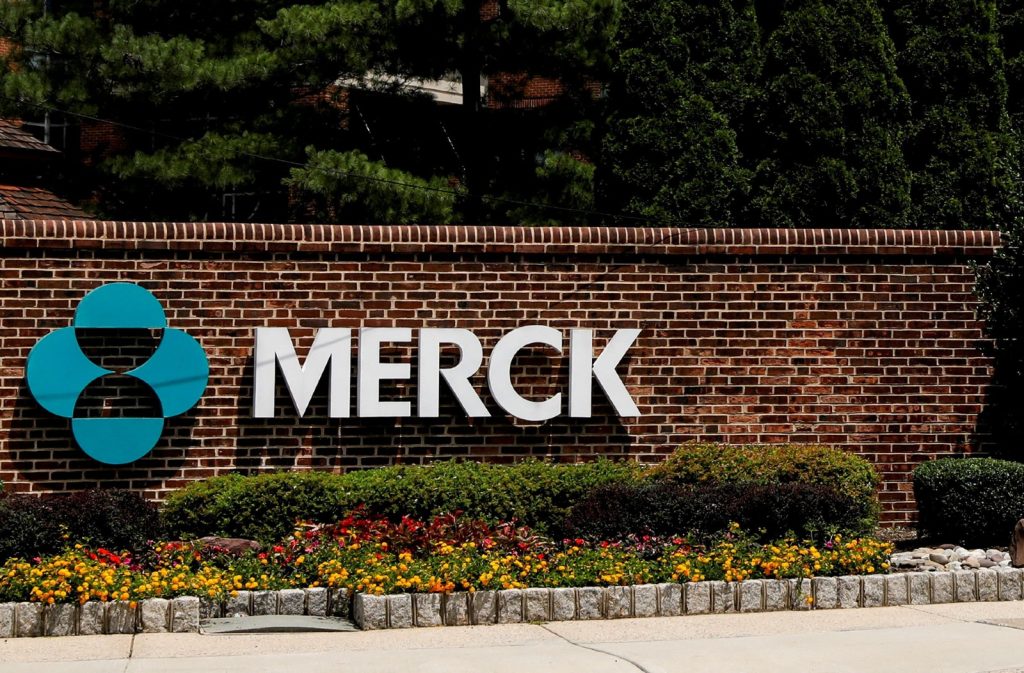At the recently held Virtual European Hematology Association meeting, Imago Biosciences presented positive data from its on-going Phase 2 b clinical trial of the experimental treatment bomedemstat (IMG-7289) for the treatment of advanced myelofibrosis.
Myelofibrosis is a rare cancer caused by acquired mutations in which blood producing bone marrow cells (hematopoietic cells) develop and function abnormally. As these abnormal cells proliferate, they cause fibrous tissue to accumulate in the bone marrow impairing the production of normal blood cells. Symptoms often occur slowly over time and include anemia, an enlarged spleen, and other symptoms similar to chronic inflammatory conditions. Median survival after diagnosis is about 5.5 years with patients most often dying from infection or acute myeloid leukemia.
Imago Biosciences’ bomedemstat inhibits the epigenetic enzyme lysine-specific demethylase-1 (LSD1), an enzyme shown to be critical for the self-renewal and differentiation of cancer stem/progenitor cells, particularly neoplastic bone marrow cells.
Imago’s open label phase 2 study is currently enrolling and is evaluating the safety and pharmacodynamics of bomedemstat administered orally once-daily in intermediate and high-risk adult patients with myelofibrosis who were resistant to or intolerant of the JAK inhibitor ruxolitinib (Incyte’s Jakafi), the current standard of care treatment.
Of the evaluable patients at 24 weeks, 83 percent had spleen volume reductions, 70 percent had stable or improved hemoglobin, 71 percent had a stable or improved bone marrow fibrosis score, and 90 percent of patients with elevated circulating inflammatory cytokines showed significant reductions. Bomedemstat was generally well tolerated. The mean duration of treatment stands at 142 days for this ongoing study.
Enrollment in the study had reached the halfway point when it was paused in March due to the Covid-19 pandemic but has resumed enrolling in most sites.
RARE Daily’s Marie Daghlian spoke with Hugh Rienhoff, CEO of Imago Biosciences about the company, why they chose their target, and where they are heading. Edited excerpts follow.
Q: What led to the founding of Imago Biosciences.
A: I’m a physician trained in hematology, and the third company that my current team and I were involved in FerroKin, which was focused on hematology and was sold to Shire in April 2012. As a team we wanted to stay in the field of hematology and my former boss, also an expert in hematology, recommended that I go hear a lecture on lysine specific demethylase (LSD1), which I did, and our team decided to focus on this because it had a lot of interesting activities, if you will, as an enzyme in normal and pathological processes involving blood.
We stayed together in 2012 and, fortunately, our previous lead investor became the lead investors in Imago Biosciences. The reason LSD1 is interesting, which is one of the primary targets of our chemistry program and the target in our clinical program, is that it is involved in malignant stem cell biology, particularly in the hematopoietic system, and it is also involved in differentiation in the hematopoietic system.
The disease we are focused on—myelofibrosis—lends itself to something that inhibits the differentiation of the megakaryocytes that make platelets.
Q: Tell me about bomedemstat.
A: Bomedemstat is an inhibitor of the epigenetic enzyme LSD1. Inhibiting LSD1 stops the differentiation of certain progenitor cells in the blood that lead to megakaryocytes – the seed of the diseases myelofibrosis and essential thrombocythemia (ET), which is a disease of elevated platelets. If you had to point your finger to one cell that is doing all the nasty work, it is the megakaryocyte, which are a primary source of the growth factors that lead to fibrosis and inflammatory cytokines that cause symptoms of fatigue, night sweats, and fevers. You need LSD1 to make a megakaryocyte, and if you inhibit LSD1 you will not make them.
LSD1 also regulates the self-renewal properties of malignant stem cells as well as the differentiation of blood progenitors to megakaryocytes. Bomedemstat reduces the number of malignant stem cells in mouse models of various diseases and inhibits the differentiation of progenitors to megakaryocytes. Megakaryocytes are the soul of the disease in the setting of ET and myelofibrosis.
So those are the clinical endpoints—the improvement in quality of life through symptom assessment. The biochemical and cellular effects of bomedemstat are the reduction in the inflammatory cytokines and ultimately an improvement in the general bone marrow environment.
The whole thesis of the treatment is to tailor the dose of bomedemstat to the patient’s platelet counts so each patient is titrated to that amount of drug that brings the platelet count into a safe target range and is going to have maximum effect on megakaryocytes without causing thrombocythemia, or low platelet count.
Q: How will that work as an oral drug? Would patients need to have their platelet levels checked constantly?
A: It is a chronic treatment. The typical myelofibrotic patient will live about five years after diagnosis. With ET they can live a bit longer—20 years. What is interesting is that once you titrate in the first month of treatment, once you get the dose right for the patient—and the dose range is relatively narrow—most patients basically get the same amount of drug, then it’s taken orally once a day and the platelet count is rather stable.
In our current study, patients on the drug for 12 weeks will start to have fewer and fewer visits to be checked because platelet counts will have stabilized at a particular level.
Right now, bomedemstat in a Phase 2b open label study in myelofibrosis and we are halfway through enrollment. When the Covid-19 pandemic passes I expect enrollment to resume to its normal rate.
Q: How is Covid-19 impacting enrollment?
A: Typically, our sites, particularly in Northern Italy, were in survival mode and when they come back on line is not clear to me. Germany is coming back and sites in the United States are coming back, but I don’t have a good feel for when sites in the U.K. will resume enrollment—it’s going to be lumpy there.
Q: Looking ahead—when will you have a data readout?
A: We have sent out dispatches every six months through presentations at meetings. We have a pretty good idea of how it’s working. We have a positive signal and it is strengthening as we get more patients enrolled. I would hope that we will be fully enrolled by the end of the year—but it’s hard to say. My own worst-case scenario is that we don’t see enrollment start to pick up until the fall, though we are starting to see some activity so that might be excessively pessimistic. At least because it is an open-label study, we can follow the patients on a week-to-week basis.
Q: Is bomedemstat being studied in other indications?
A: Yes, as a treatment for essential thrombocythemia, and that study is about to open enrollment.
Q: Do you engage with patient communities and groups to find patients for the trials?
A: Laura [Eichorn, COO] is tasked with working with patient groups. We support the work of the MPN Research Foundation, the MPN advocacy group, and others.
Q: How big is the company and what how far will your current funding take you?
A: We have a bigger group—besides the four of us we have 12 full time employees and six part time involved in chemistry and clinical operations and about the same number of vendors/contractors. As far as financing—we did a $45 million series B in March 2019 led by Omega Group in Boston that brought in five new investors. That money will last us to the end of the first quarter of 2022. Even with the delay in enrollment, we have enough to fully enroll the trial. We will be in a strong position at the end of this year because we will have most of our myelofibrosis data, the first five to 10 patient’s data in ET, and we will also start a polycythemia vera study, a red blood cell disorder that is allied with myelofibrosis in that some of the same mutations are involved. At the end of the year, we’ll have data on three indications, and hopefully start some small studies in rare cancers in which LSD1 plays a strong role—studies that are being driven by investigators studying these diseases in their labs—and we will supply them with the drug. So, it is a big year.
Q: What is your business strategy? Is partnering an option?
A: We are experts in this field and would like to take it forward ourselves. It’s not that complicated or huge in terms of clinical trials. These are rare diseases and we have orphan designation and fast track designation in both ET and myelofibrosis. We hope to have a definitive discussion with the FDA in the next 12 months about what a Phase 3 study should look like and take it from there. We would have to raise additional financing for that.
Polycythemia vera and ET can be relatively benign diseases, but they can also lead to myelofibrosis and leukemia. They warrant close watching. One of the things we hope we see clinically is that we have an impact on the malignant stem cells that perpetuate these diseases. The red blood cells are made downstream from the malignant stem cells.
Q: You had mentioned that ruxolitinib is the standard of care treatment for myelofibrosis. Are you looking for a better safety or efficacy profile than the current ruxolitinib?
A: Ruxolitinib [Jakafi] is not approved for essential thrombocythemia, so we don’t have to compare it. In myelofibrosis, where it has been used effectively for nine years, all of the patients in our study have been on Jakafi and failed. So right now, we are studying bomedemstat as a second-line treatment. At some point this year, we are going to start a study adding bomedemstat to Jakafi, and ultimately, we will creep up and go head to head against Jakafi. However, that’s the long view. I think we might have a better safety profile based on the chemistry, but that needs to be established in a rigorous trial. In the short term, we’ll focus on those patients who no longer benefit from Jakafi, or those patients where adding bomedemstat to Jakafi gives them more benefit than they are getting with Jakafi alone.




